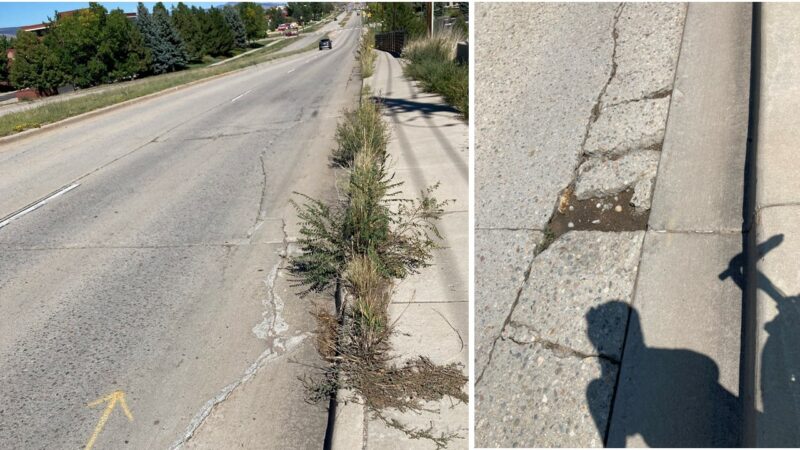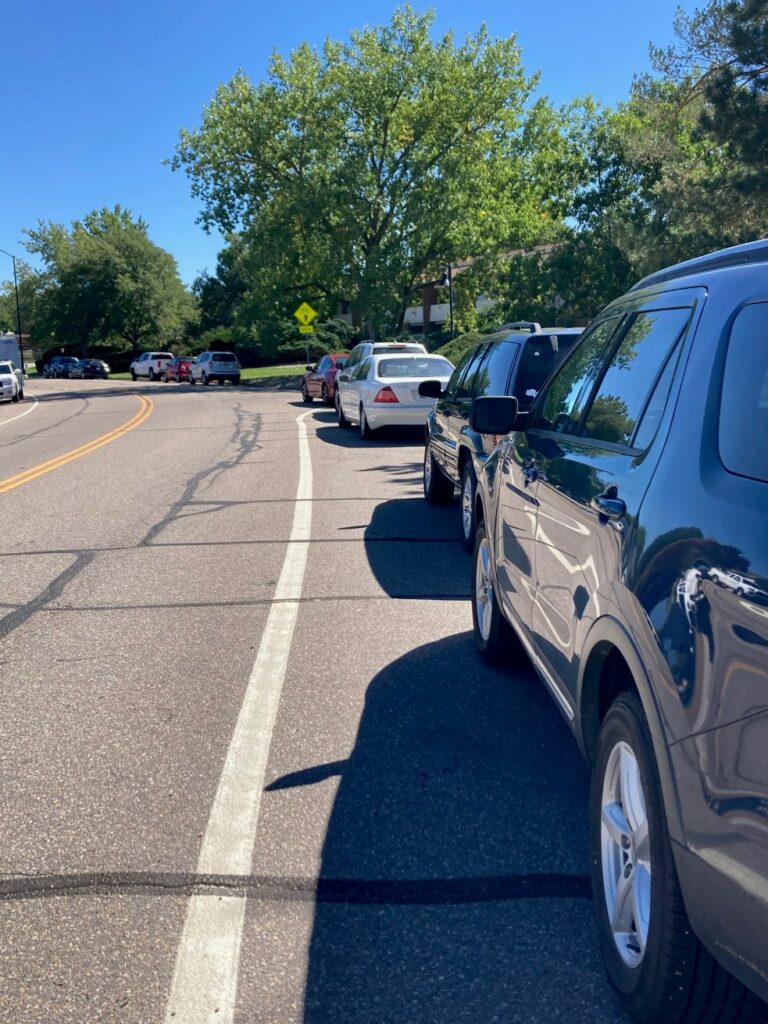By Sharon Alexander and Jan Borstein
The suggestion that cyclists always ride as far to the right on the road as possible can, in certain situations, be dangerous. And technically, it’s not what the law states. So don’t hug that far-right, ragged edge of the road when it’s not the safest option. According to Colorado state motor vehicle laws, cyclists are considered vehicles. That means we have the same rights and responsibilities as motorists — the same right to be on the road and to maintain a safe maneuvering space on all sides of us. Furthermore, the law states:
If the right-hand lane then available for traffic is wide enough to be safely shared with overtaking vehicles, a bicyclist shall ride far enough to the right as judged safe by the bicyclist to facilitate the movement of such overtaking vehicles unless other conditions make it unsafe to do so. Colorado Statute 42-4-1412. Operation of bicycles and other human-powered vehicles.
Note the words we’ve emphasized above: “as judged safe by the bicyclist” and “unless other conditions make it unsafe to do so.” In other words, you may use your judgment regarding how far to the right is safe. And when other conditions make it unsafe to ride at the far right, you may move farther left.
The right edge of 63rd Street northbound in Gunbarrel — with long cracks parallel to the curb, weeds, and huge holes — is downright dangerous! We recommend claiming your safe biking space by taking the lane on a road like this.

Moving away from the edge of the road, or even taking the lane, is often a safe move because it:
- gives you more space in which to maneuver
- helps you avoid obstacles, such as rough edges and debris or parked cars whose drivers might suddenly open a door in front of you
- establishes your position and prevents motorists from passing until there’s enough room

Staying to the right of the white line increases your risk of getting “doored” if the driver opens their car door just as you’re approaching. On streets with parking like this, you’re safer riding in the lane.
In our opinions, it all comes down to effective communication. Knowing that you have the right to travel along the road safely, just as someone in a car does, start communicating your intentions and show your appreciation of those motorists who do slow down or move cautiously around you. Make eye contact; be clear in your signaling, turning, and stopping intentions; and assert your right to safe space.
And of course, moving out of harm’s way is always important, too. As exposed travelers on the road, we have more to lose if something goes wrong.
When on group rides, taking the lane and riding two-by-two can sometimes make us safer because first, we are clearly claiming our right to the lane, and second, we are making our groups more compact so that we can clear an intersection or problem area more quickly. Below are some examples:
- Turning left at an intersection
- Riding on a road that does not have a safe shoulder or bike lane, e.g., Highway 36/66, heading west into Lyons
- Passing through a roundabout
Claiming your safe space is also important when descending, even more so if you are traveling at or about the same speed as cars. Moving into the lane puts the motorist in the position of slowing down, looking around, and deciding when it’s safe for them to pull out around you. Don’t let them squeeze you off the road!
Begin to start claiming your safe space and stop giving away your right to the road by moving a few inches to the left on your next ride when it’s appropriate and safe to do so. And when no one else is on the road, move closer to the middle, and see what that feels like. You may find that you actually feel safer by having space on all sides of you as you ride. You might also find that motorists act more consistently and respectfully because you assert your right to be there.
Here’s to a happy, healthy, and safe experience for years to come out on the roads on your bicycle.
See also these resources on safe cycling :
Comments are closed.